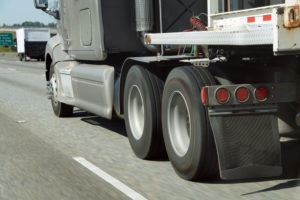LRR Tires: Can They Really Save You Money on Fuel?

Identifying ways to save money on fuel costs has a positive impact on the bottom line. Fleet managers already know that a fleet fuel card saves money through rebates and at-the-pump discounts, but what about Low Rolling Resistance (LRR) tires? Is their higher upfront cost justified in fuel cost savings over time? The simple and straightforward answer is “yes,” but the details surrounding fuel savings depend on factors such as driving conditions and load rating.
It’s All About Tread Depth
Conventional tires have almost double the tread depth as LRR tires. While this helps conventional tires last longer, increased tread depth has a negative impact on fuel economy.
Reduced tread depth creates more tire surface to handle the weight of the tire supports. This results in the tire bearing less weight on the tread as it contacts the road. LRR tires decrease rolling resistance, which in turn, burns less fuel.
Avoid Premature Wear and Tear
The deeper tread depth on conventional tires can become distorted as the tire wears, resulting in premature wear and replacement. Since they have thinner tread, LRR tires are less likely to experience irregular wear. You won’t be able to get as many miles out of LRR tires, but you’ll reap the benefits of reduced miles per gallon while traveling.
Consider Load Weights
LRR tires are useful for multiple applications, but they’re not universally guaranteed to be the best choice for your fleet’s needs. Heavy-haul fleets that experience rapid wear and deeper tread tires may be the more cost effective choice for this application. Fleets traveling at higher speeds while carrying lighter loads will experience increased fuel efficiency by switching to LRR tires.
Calculate Your Savings
The standard claim for LRR tires is that they provide a 10% improvement in efficiency, which is calculated in a lab and then tested on the road. However, improving the rolling resistance of your tires by 10% does not mean you’ll saved 10% on your fuel economy. The ratio of tire efficiency to fuel efficiency is about 3 to 1. This translates to a 3% improvement in fuel economy for your vehicle.
While the number may seem small, it will add up in cost savings over time. An easy way to determine how much you’ll save with LRR tires is by figuring out how far you drive, how many gallons of fuel are used, and the average cost of gas. Apply the 3% savings to the price per gallon, multiplied by your fleet’s fuel consumption, and you’ll discover that you’re saving more than you think.
Rack Up Fuel Savings
LRR tires are an upfront investment that pay themselves back over time. A Fuelz Fleet Card, however, is designed to help you save on fuel costs immediately. With per-gallon rebates and discounts, as well as a host of customizable data tools, your fleet can save up to 15% on overall fueling expenses. To learn more, contact Fuelz or call 855-GO-FUELZ today.
